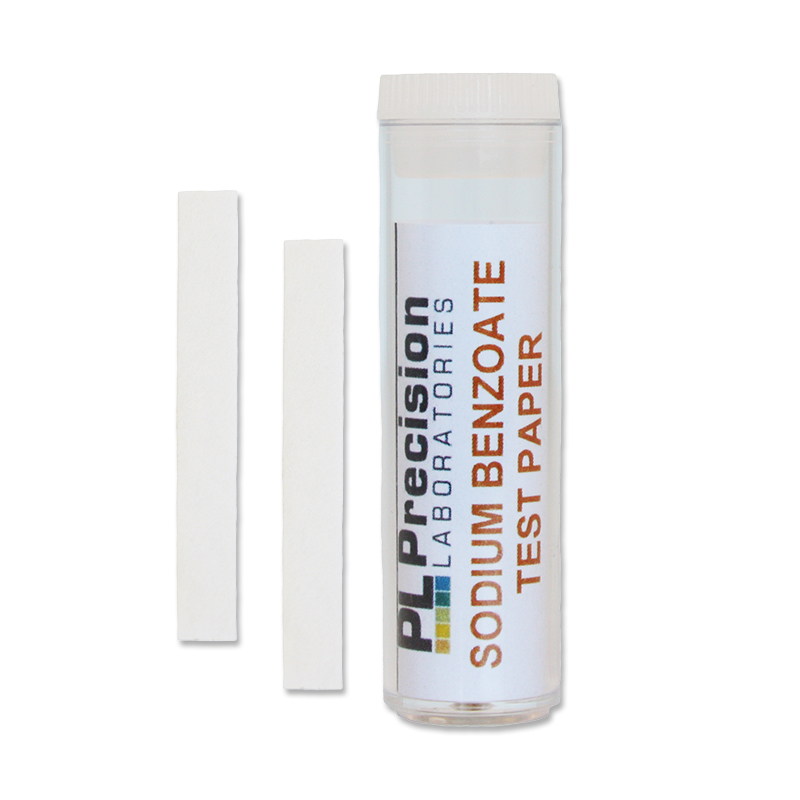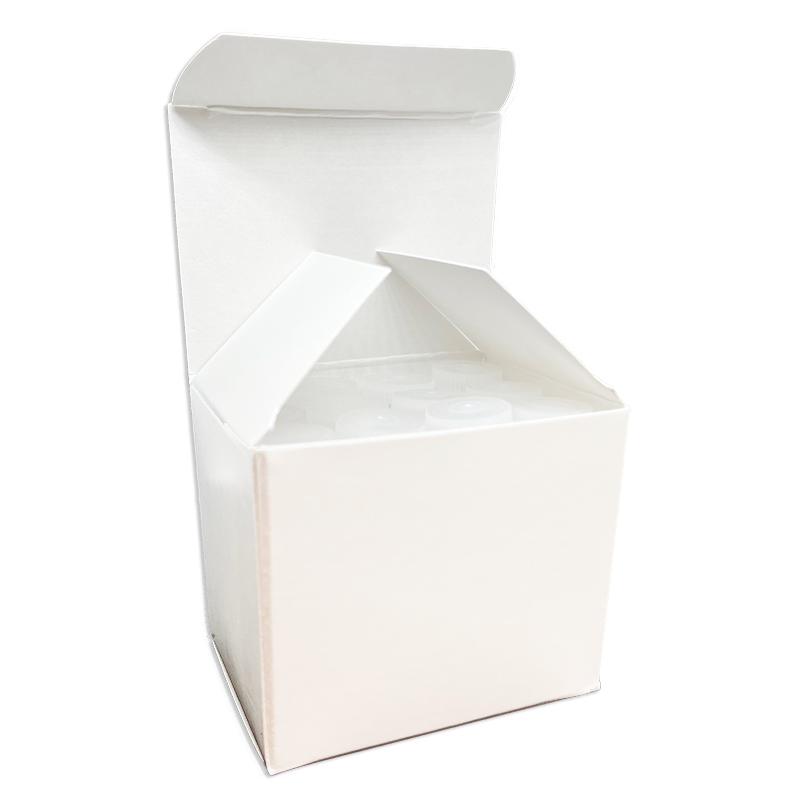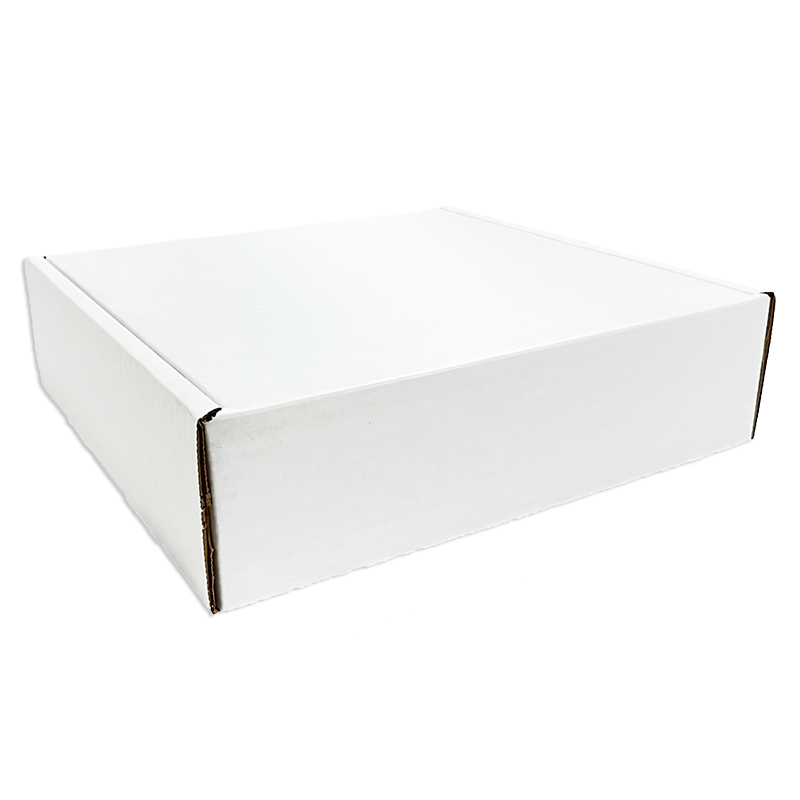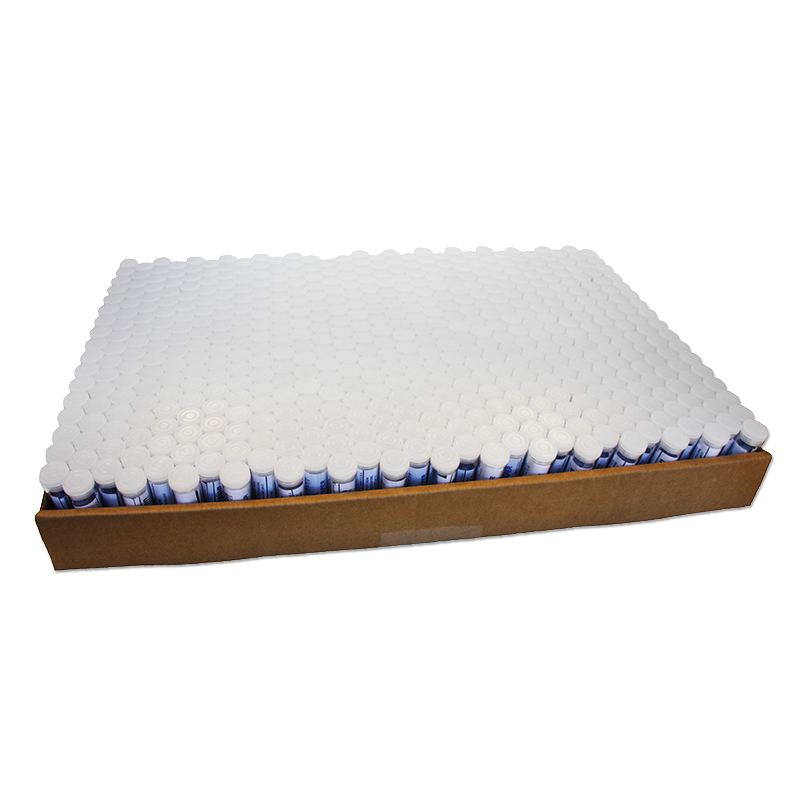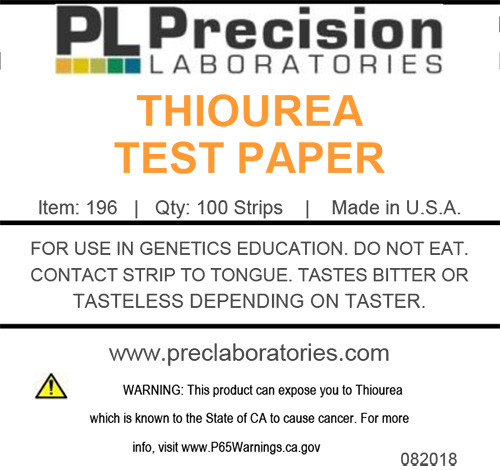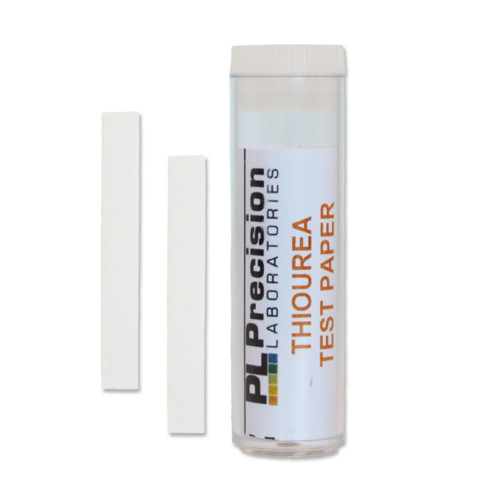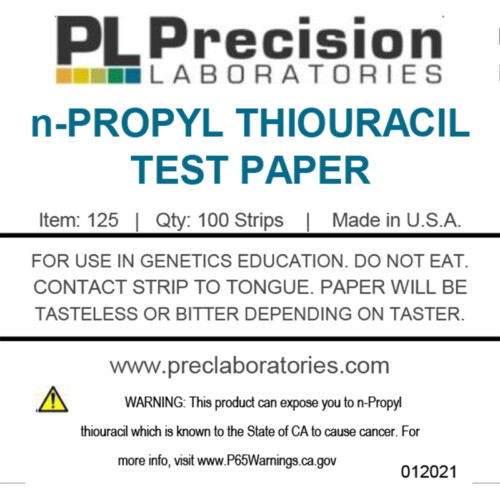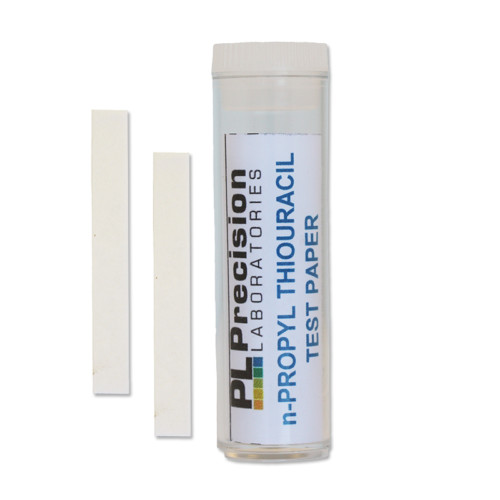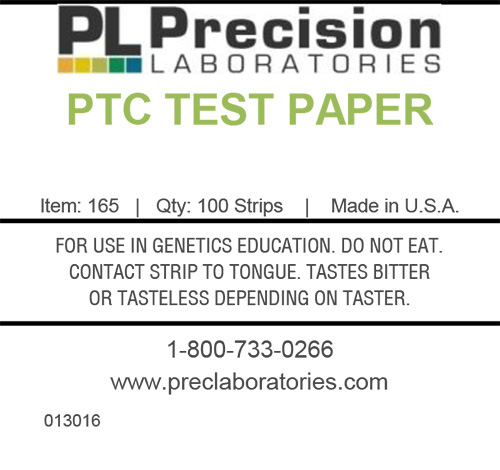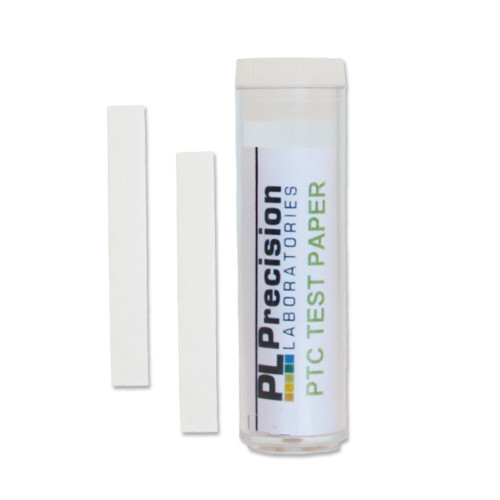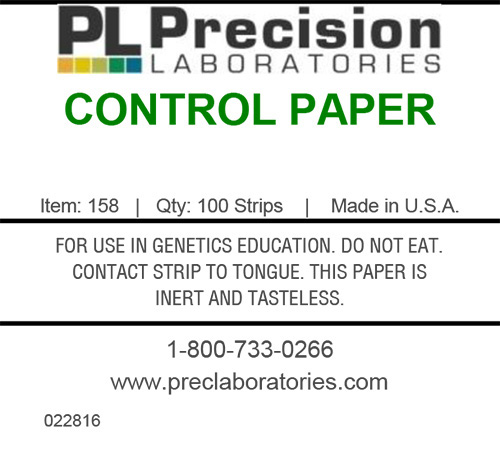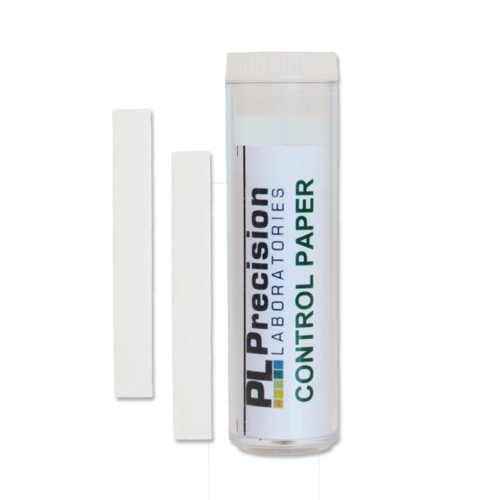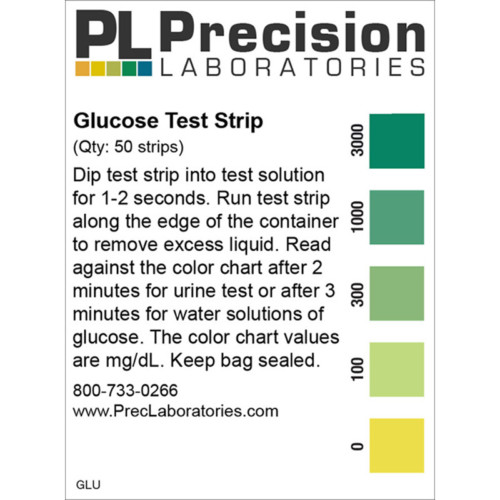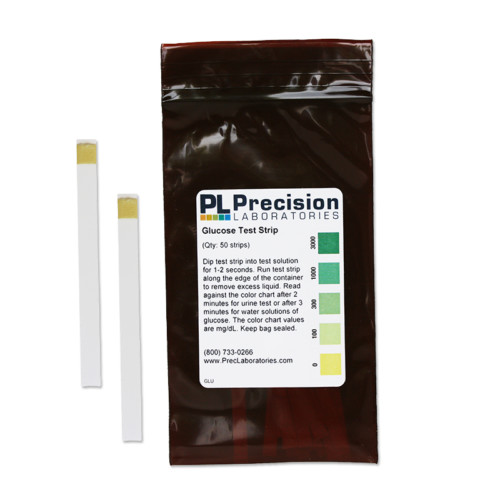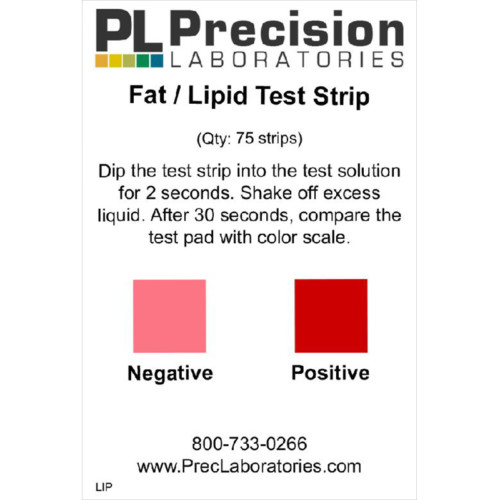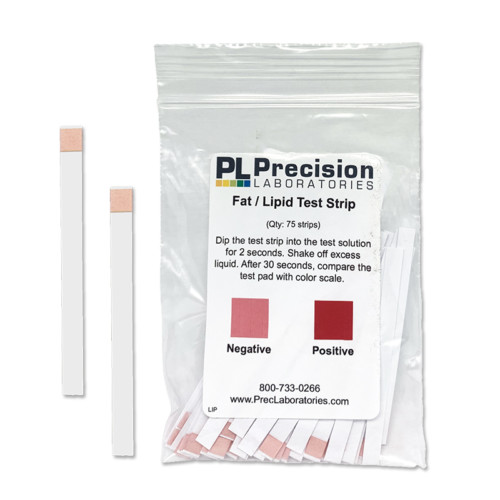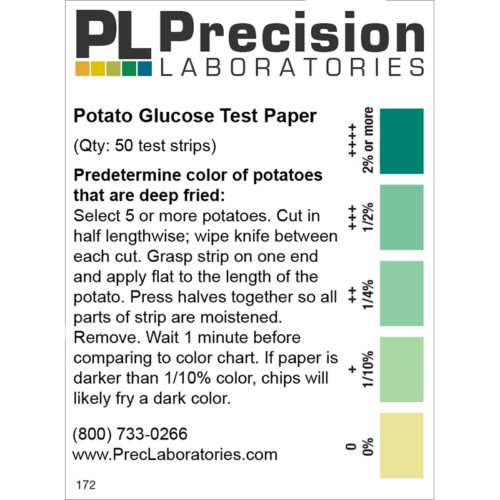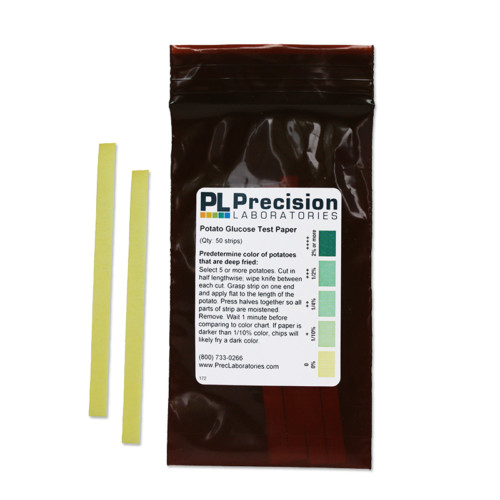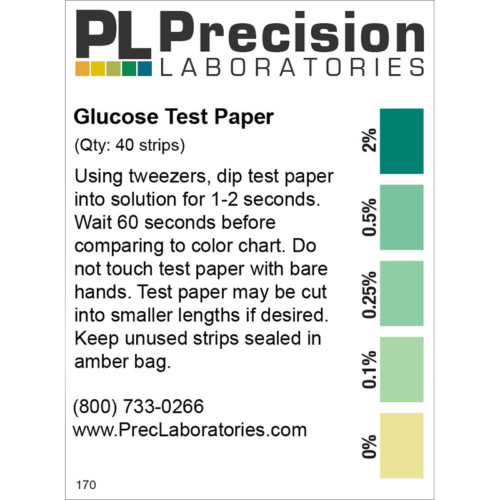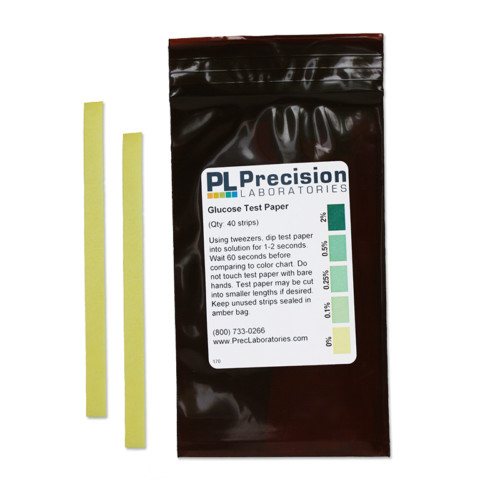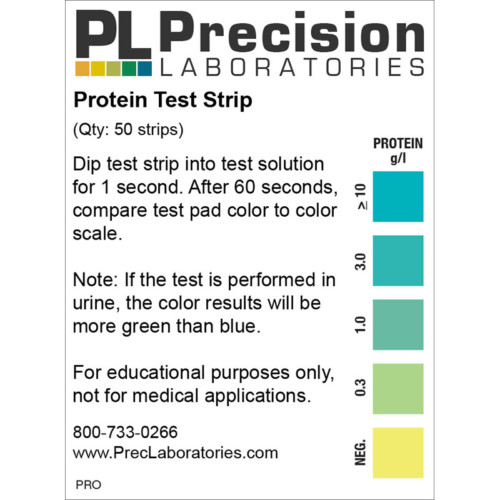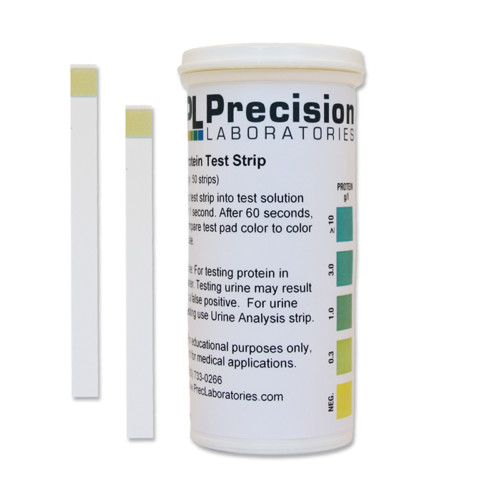Sodium benzoate test paper detects the genetic ability to taste Sodium Benzoate. The taste detected varies from sweet, salty, to bitter, depending upon the individual. Homozygous-dominant and Heterozygous-dominant individuals will detect the molecule.
Sodium Benzoate Test Paper
Sodium Benzoate Test Paper
- Remove a strip of test paper from the vial.
- Stick out your tongue, and place the strip on your tongue.
- You may not taste anything, but if you do, there are three basic results: sweet, salty, and bitter.
Note: The SDS for each taste test paper lists the ingredients (located in the Product Documents tab below). The concentration of ingredients is usually so small, it is less than what would be considered hazardous. Aside from these small quantities, the cellulose paper is the only other ingredient. In addition, the proper use of each taste test is to touch the strip to the tongue. These taste strips have been used safely in classrooms for decades.
The manufacturing facility where the PTC paper is produced (Cottonwood, AZ) is a typical manufacturing site. We don’t manufacture nuts, gluten or other products usually associated with allergy concerns. Please note, however, that the facility is not certified or considered an allergy-friendly manufacturing facility. In addition, the raw materials used in producing the taste test papers are not procured in any special fashion. We have no assurance that they were produced in an allergy-free environment.
Despite the above information, if you have a concern about a possible allergic reaction, perhaps it would be best to abstain from the activity.
CD266; CG266; 266/500; 166; 166-12V-100; 166-144V-100; 166-500V-100
Product Specs
| SKU 1: | 166-12V-100 (12 vials, 100 strips/vial) |
|---|---|
| SKU 2: | 166-144V-100 (144 vials, 100 strips/vial) |
| SKU 3: | 166-500V-100 (500 vials, 100 strips/vial) |
| Strip Quantity: | 100 strips |
| Vial Dimensions: | .75″ (D) x 2.75″ (H) [19mm (D) x 70mm (H)] |
| Strip Dimensions: | 1.875" (L) x .25" (W) [48mm (L) x 6mm (W)] |
| Box Dimensions: | 10" x 10" x 2.75" [29.8 cm x 19 cm x 7 cm] (144-pack box), 21" x 14.75" x 3" [53.3 cm x 37.5 cm x 7.6 cm] (500-pack box), 3.25" x 2.375" x 3" [8.3 cm x 6 cm x 7.6cm] (12-pack box) |
| Weight: | 0.02 lbs [9 g] (single vial) |
| Other: | Stored in a pocket-sized, lightweight vial. |
| Shelf-Life: | 2 Years |
| Label: | Customizable Label |
Product Documentation
Is it possible to have an allergic reaction when using your taste test strips?
The SDS for each taste test paper lists the ingredients. The concentration of ingredients is usually so small, it is less than what would be considered hazardous. Aside from these small quantities, the cellulose paper is the only other ingredient. In addition, the proper use of each taste test is to touch the strip to the tongue. These taste strips have been used safely in classrooms for decades.
The manufacturing facility where the PTC paper is produced (Cottonwood, AZ) is a typical manufacturing site. We don’t manufacture nuts or other products usually associated with allergy concerns. Please note, however, that the facility is not certified or considered an allergy-friendly manufacturing facility. In addition, the raw materials used in producing the taste test papers are not procured in any special fashion. We have no assurance that they were produced in an allergy-free environment.
Despite the above information, if you have a concern about a possible allergic reaction, perhaps it would be best to abstain from the activity.
What determines if I can taste PTC or Sodium Benzoate?
The taste test strips exhibit a taste due to a dominant allele on chromosome number seven, and the ability to taste these compounds is present in about 70% of the U.S. population. The ability to taste is due to two different sets of alleles. These compounds are present in various naturally occurring foods, and are selected due to their similarity to bitter alkaloids and cardiac glycosides, used by the plant to reduce browsing by herbivores.
Thus, their presence is a result of natural selection both for the plants which produce them and the animal which benefits from the ability to sense them. It is a benefit to be able to detect them and avoid bitter tasting foods, some of which might be harmful if swallowed. Hence, it is a trait selected for in populations evolving in an area which had/has such plants.
Unlike PTC, which taste bitter if an individual can taste it at all, Sodium Benzoate might taste sweet, salty, or bitter. It would generally taste salty to an individual who can taste the bitterness of PTC.


